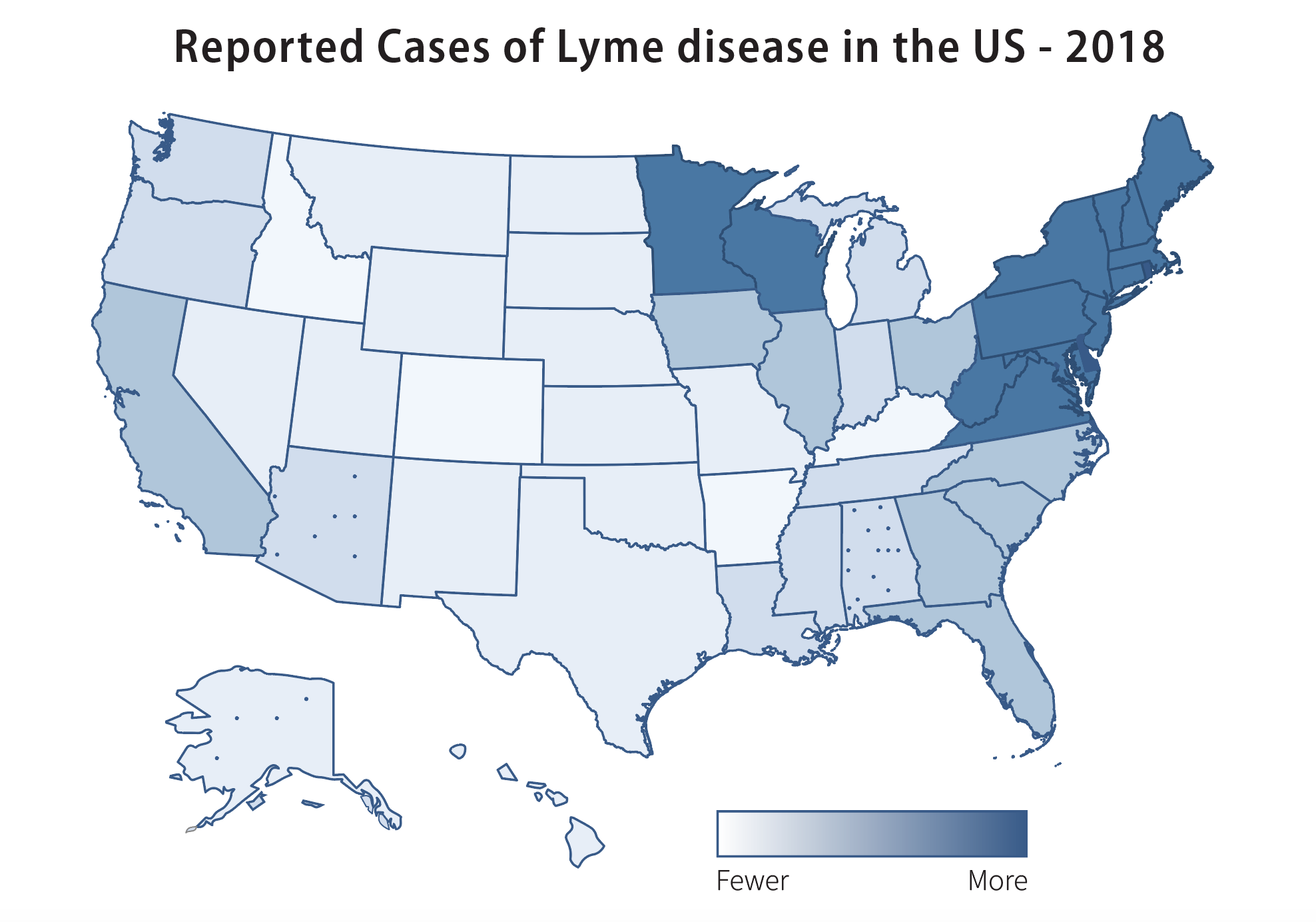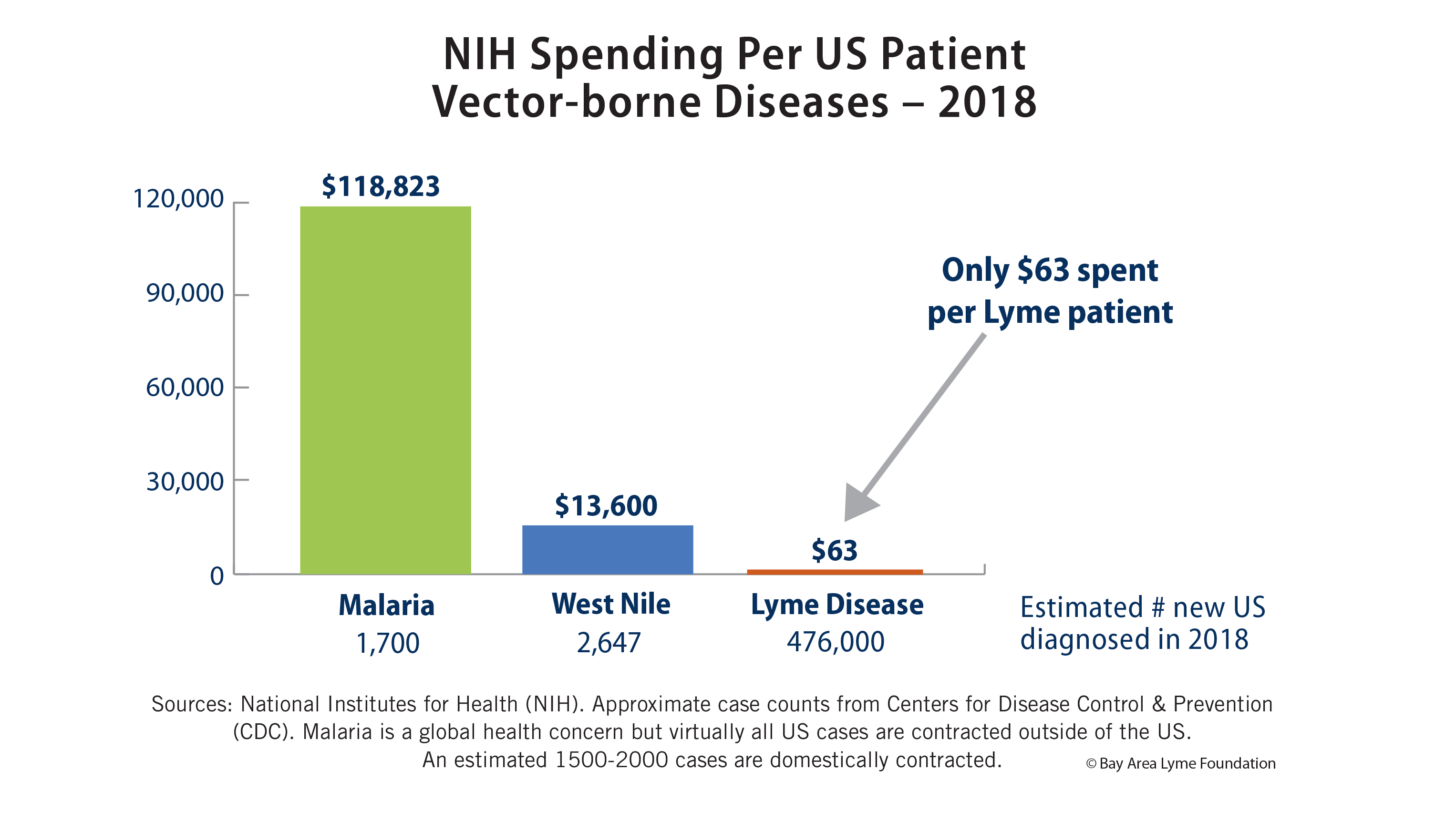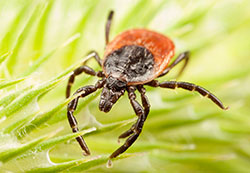Quiet Epidemic
Lyme disease is the fastest growing vector-borne illness in the US. The CDC has announced that the number of people diagnosed each year with Lyme disease has climbed to approximately half a million, which is a jump of 59% over the 300,000 estimate previously listed on the CDC’s website. This is based on new research in two studies in the publication Emerging Infectious Diseases.
It is an infectious disease caused by the bacteria Borrelia burgdorferi transmitted to humans by the bite of an infected blacklegged tick. Most infections are caused by the nymphal form of the tick. These immature ticks are the size of a small poppy seed, allowing them to easily escape discovery.
Tick infection rates vary considerably from one location to the next, even park-to-park within the same county, for reasons that are not yet explained. In addition to the Bb bacteria, ticks often carry other pathogens that cause co-infections such as Babesiosis or Ehrlichiosis in their human hosts which can complicate treatment.
Lyme disease has been on the rise and is expanding its geographic footprint. First discovered in Lyme, CT, Lyme disease has become increasingly common throughout the Northeast, north central midwest, and in the Western coastal states and has been reported in all 50 states. Lyme disease is not limited to the US — it has also been found in 65 countries worldwide.
Devastating Debilitator
In its acute stages, Lyme is an uncomfortable but highly treatable disease. Undiagnosed, however, it becomes a devastatingly difficult illness that becomes increasingly hard to identify or to treat. Lyme is known as an “imitator” that mimics many other ailments. Once the infection disseminates and spreads into the nervous and muscular systems, the bacteria become harder to detect and less susceptible to antibiotic treatments. Patients with late stage or post treatment Lyme disease can suffer crippling joint and muscular pain, migraines, light or sound sensitivity, cognitive impairment, nausea, fatigue, and even heart or breathing issues.
Solvable Problem
Long ignored and mired in controversy, Lyme disease is significantly underfunded relative to other comparable and less common illnesses like West Nile or even HIV. With ~500,000 new cases every year and a rapidly-expanding geographic scope, Lyme is an important public health issue.

Prevention is and must be the first line of defense against this disease. Most people outside of a few endemic regions, are highly unaware of the nature and reach of Lyme disease … and the need to protect themselves with a few steps of precaution.
Next are reliable diagnostics and novel treatments that can bring relief to those suffering with Lyme. With powerful new technologies like transcriptome profiling and next generation sequencing, and innovative therapeutic approaches such as biofilm busters and combination therapies dialing up antibiotic virulency, there is hope and the potential for real solutions.
Lyme is a frustrating and debilitating disease but it is a problem we can solve.
Why Care About Lyme Disease?
 There are ~500,000 new cases of Lyme disease in the US every year and it is growing rapidly. The revised CDC estimates increased the number of cases by more than ten-fold what was previously believed making Lyme disease one of the fastest-growing infectious diseases in the US.
There are ~500,000 new cases of Lyme disease in the US every year and it is growing rapidly. The revised CDC estimates increased the number of cases by more than ten-fold what was previously believed making Lyme disease one of the fastest-growing infectious diseases in the US.- Untreated, Lyme disease can become a severely debilitating disease affecting joints, the heart, the brain, and/or the central nervous system. There are half a million Americans struggling with late-stage Lyme disease.
- Persistent Lyme Disease (PLD) causes immense suffering and severe health issues for thousands of patients with little remedy. Controversy over prolonged antibiotic use, highly variable disease progression and genetic conditions, and masquerading symptoms often impede treatment.
- Prevention is key, yet few are aware of the risks or how to take precautions.
- Promising scientific research is leading to new clinical solutions and the potential for radically different patient health outcomes.
At Bay Area Lyme, our mission is to put a stop to Lyme disease. Our focus is on prevention and the development of better diagnostics and treatments.
We fully believe Lyme disease is a solvable problem. Join us in finding the solution.